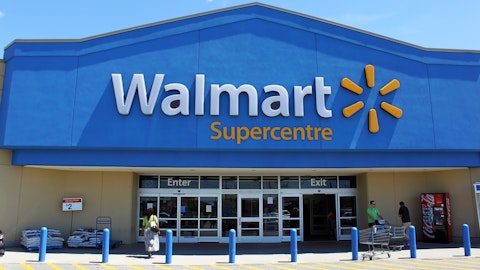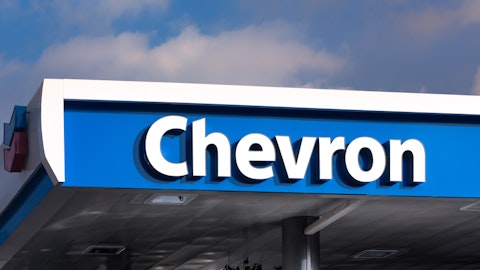Business Overview
Chevron Corporation (NYSE:CVX) is split up into two main business segments: Upstream and Downstream.
The upstream segment is composed of the company’s exploration and production activities. This business segment is reliant on supportive commodity prices. Not surprisingly, the upstream side of the business is getting hit hard by the decline in oil and gas prices over the past two years.
Chevron lost $1.9 billion in its upstream business in 2015, compared with a $16.9 billion upstream profit the year before.
The good news for Chevron is that its downstream segment helped offset some of these losses. Chevron’s downstream unit generated $7.6 billion of earnings last year, which was a 75% year over year increase. This is the biggest benefit of being an integrated major. When oil prices decline, upstream profits collapse. But the trade-off is that downstream profits typically increase during periods of falling oil prices. The downstream business includes refining, which actually benefits from lower oil prices because it reduces refining feedstock costs. A reduction in costs helps widen refining profit margins.
Overall, Chevron earned $4.5 billion in 2015, thanks to significant cost cuts. Chevron spent $40 billion in 2014 on total exploratory and capital spending. It plans to spend $25 billion-$28 billion this year, and further reduce 2017 and 2018 capital expenditures to $17 billion-$22 billion.

Source: Chevron September 2016 Investor Presentation, slide 10
However, continued deterioration of the upstream segment is having a significant effect. Chevron’s upstream business represented 88% of its 2014 earnings. The impact has lasted into 2016. Over the first half of the year, Chevron lost $2.1 billion, due to a $3.9 billion loss in upstream activities.
As a result, the company needs a higher oil price to return to consistent profitability.
Growth Prospects
The most important growth catalyst for Chevron would be a higher oil price.
While oil has rallied off its 2016 low of $27 per barrel in the United States, it is still approximately 50% off of its 2014 high of ~$100 per barrel. Unfortunately, Chevron cannot control the direction of oil prices. But it does have its own growth prospects, which are its upstream projects.
Two of the most important projects for Chevron are its liquefied natural gas fields in Australia, named Gorgon and Wheatstone. Collectively, these two projects hold capacity of more than 24 million tonnes of annual gas production.
Chevron saw first production from Gorgon last quarter, and Wheatstone is nearly complete. These projects are likely to see considerable demand, as they are optimally located to serve the Asian markets, where energy demand is booming.

Source: Chevron September 2016 Investor Presentation, slide 22





